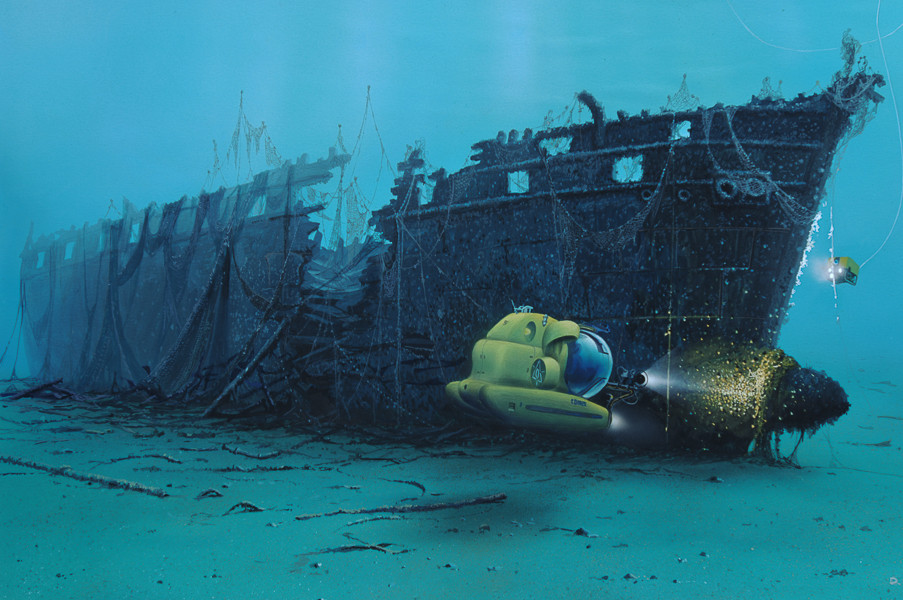
IRONCLAD RE D’ITALIA
DEPTH: 108 - 120 m
SKILL: Expert
Re D'Italia; ironclad, wooden hull with armour, steam engine and sails; Italian Navy
Built: William Webb shipyard, 1861-1864, New York, USA
Sunk: 20th July 1866 (Rammed by Austro-Hungarian ship Erzherzog Ferdinand Max)
Dimensions: l=84 m, w=17 m, draught=6 m
Coordinates: 43.16975° N, 16.03852° E
Location: 10 nm N of the cove of Oključna on Vis
Access: 1/5 access is solely by boat (the location is in the open sea)
Visibility: 2-3/5 variable, occasionally poor but sometimes very good
Current: 3/5 weak, only occasionally moderate
Flora and fauna: 4/5 varied life on and around the wreck, on the wreck large specimens of fish
HISTORY:
After the French-British Battle of Vis on 13th March 1811, the British built temporary military defence facilities, and their ships often docked in Vis’s harbour. Eventually they built a number of forts, which were contemporarily armed. As a well armed centre, Vis was taken over by Austria and from then on Vis harbour served as anchorage and a stronghold for the Austrian squadron when it cruised the Adriatic.
On the morning of 17th July 1866 the Italian squadron cruised to the waters of Vis with the aim of landing and taking the island on 18th July. In the morning the ships of the squadron opened fire on the island, which defended itself with all its strength. The following day the Italian squadron continued the artillery attack which lasted all day. Despite the Italian superiority the landing was delayed for yet another day. At about 1030 hrs. the Austrian squadron approached Vis. The Italian fleet was caught off guard and due to confusion in command, the Italian squadron was split into three parts, between which the Austrian squadron penetrated.
The flagship Erzherzog Ferdinand Max first attacked the ironclad Re D'Italia destroying its rudder, and then the ironclad Palestro near the stern and damaged it. The Re D'Italia in the meantime sailed out of control, and the Ferdinand Max rammed it. The armoured bow of the Ferdinand Max pierced its hull about two metres deep, and then by driving astern succeeded to detach itself from the Italian ironclad which due to the massive breach of water it immediately began to list to port. From the stricken ship they managed to fire one more salvo from their cannons.
The Re D'Italia sank in just 2.5 minutes taking with it a large number of Italian sailors. The fighting continued fiercely unabated. The Italians tried several unorganised individual attacks on the Austrian ships, but without success.
Around 1300 hrs. the fleets were separated by 4-5 nautical miles and only occasionally exchanged fire. Between them emerged the Italian ironclad Palestro which was ablaze. At about 1430 hrs. several small explosions were heard from the Palestro, and just two minutes later it blew up and sank, leaving only 23 survivors of the crew on the surface. At about 1600 hrs. the Italian squadron turned towards Biševo and passed the spot where the Re D'Italia had sunk, where it saved 159 sailors and 9 officers. In the early evening the Italian fleet turned towards Ancona, whilst the Austrian sailed into Vis.
The Italian fleet had lost two great ironclad the Re D'Italia (419 dead) and the Palestro (217 dead). Altogether 605 sailors were killed and 38 officers. The Battle of Vis (also known as the Battle of Lissa) is considered to be the Austrian fleet’s greatest victory.
EXPLORATION AND DISCOVERY OF THE WRECK:
An opportunity for serious exploration appeared accidently in the autumn of 2003, when a small group of Croatian and Slovenian underwater archaeologists visited Marseilles, to the company Comex. A joint expedition was planned for over a year. A large amount of historical analytical work had already been conducted for the project to research the Battle of Vis in preparation for the project. As a result of all of our findings, we set a search field of 12 x 20 nautical miles large, inside which the research ship Janus with its powerful sonar would comb the seabed over depths of 100 metres.
Late in the evening of 28th April 2005 the research catamaran Janus II docked along the waterfront of the town of Vis, and the search for the Re D'Italia began…
The first few days of the search were full of excitement. Just after a few miles the combing sonar discovered a wreck. A robot was lowered which examined the wreck. It was concluded that this was an unknown steamship of small dimensions, which dated back to a period considerably earlier than the Battle of Vis. After several miles the strong shadows of large obstacles on the seabed were outlined on the screen in the control room of the Janus. Although visibility was poor, the robot’s video camera recorded one more wreck with a steel hull and smaller dimensions.
A few miles away from us a trawler was pulling in its nets. We decided to change tactics. We would only search the areas close to the fisherman’s marks, so that we would significantly save time. We passed over a number of the marks. Then a turn and a start on a new course…, and suddenly on the monitor’s screen, right on the edge of the search area, a clear shadow of some large object was drawn. A wreck! The robot was lowered to the depths so as to explore what is was. Visibility was so poor that only with the help of the sonar on the robot submersible was it possible to determine how far away it was from the wreck. Finally on the screen there appeared a vertical flat surface overgrown with yellow, orange and brown sponges. When the submersible reached the bottom, visibility was even worse. In such conditions exploration was not possible and soon it was called-off.
The following day the robot submersible confirmed that conditions were considerably better and so the serious investigation was begun. The whole of the aft section of the ship was viewed and observed were a large number of dishes, plates and various parts of ship equipment. With the submarine we sought to examine the outer panelling of the ship’s hull. In some places we could see a series of square openings which could have been the openings for the cannons, but the barrels were not there. The submarine slowly slid above the wreck until it reached the bow. The robot submersible followed it every step of the way recording. The bow looked almost flat, until suddenly a spotlight shone upon an object in the form of a spike attached to the bow, which jutted out straight forward. This was the rostrum or armoured beak for the ramming of enemy ships of a very specific shape, which could not belong to any other ship except – the ironclad Re D'Italia!
During the entire expedition only two samples were removed from the wreck, without violating the wreck’s integrity. They were the brass pedestal of the ship’s deck compass and one oval plate with the initials “RM”. Both finds were restored in the laboratories of the Croatian Conservation Institute.
The description and illustrations are a courtesy of Danijel Frka and Jasen Mesić. Buy the whole book here: https://shop.naklada-val.hr/product_info.php?products_id=561
Built: William Webb shipyard, 1861-1864, New York, USA
Sunk: 20th July 1866 (Rammed by Austro-Hungarian ship Erzherzog Ferdinand Max)
Dimensions: l=84 m, w=17 m, draught=6 m
Coordinates: 43.16975° N, 16.03852° E
Location: 10 nm N of the cove of Oključna on Vis
Access: 1/5 access is solely by boat (the location is in the open sea)
Visibility: 2-3/5 variable, occasionally poor but sometimes very good
Current: 3/5 weak, only occasionally moderate
Flora and fauna: 4/5 varied life on and around the wreck, on the wreck large specimens of fish
HISTORY:
After the French-British Battle of Vis on 13th March 1811, the British built temporary military defence facilities, and their ships often docked in Vis’s harbour. Eventually they built a number of forts, which were contemporarily armed. As a well armed centre, Vis was taken over by Austria and from then on Vis harbour served as anchorage and a stronghold for the Austrian squadron when it cruised the Adriatic.
On the morning of 17th July 1866 the Italian squadron cruised to the waters of Vis with the aim of landing and taking the island on 18th July. In the morning the ships of the squadron opened fire on the island, which defended itself with all its strength. The following day the Italian squadron continued the artillery attack which lasted all day. Despite the Italian superiority the landing was delayed for yet another day. At about 1030 hrs. the Austrian squadron approached Vis. The Italian fleet was caught off guard and due to confusion in command, the Italian squadron was split into three parts, between which the Austrian squadron penetrated.
The flagship Erzherzog Ferdinand Max first attacked the ironclad Re D'Italia destroying its rudder, and then the ironclad Palestro near the stern and damaged it. The Re D'Italia in the meantime sailed out of control, and the Ferdinand Max rammed it. The armoured bow of the Ferdinand Max pierced its hull about two metres deep, and then by driving astern succeeded to detach itself from the Italian ironclad which due to the massive breach of water it immediately began to list to port. From the stricken ship they managed to fire one more salvo from their cannons.
The Re D'Italia sank in just 2.5 minutes taking with it a large number of Italian sailors. The fighting continued fiercely unabated. The Italians tried several unorganised individual attacks on the Austrian ships, but without success.
Around 1300 hrs. the fleets were separated by 4-5 nautical miles and only occasionally exchanged fire. Between them emerged the Italian ironclad Palestro which was ablaze. At about 1430 hrs. several small explosions were heard from the Palestro, and just two minutes later it blew up and sank, leaving only 23 survivors of the crew on the surface. At about 1600 hrs. the Italian squadron turned towards Biševo and passed the spot where the Re D'Italia had sunk, where it saved 159 sailors and 9 officers. In the early evening the Italian fleet turned towards Ancona, whilst the Austrian sailed into Vis.
The Italian fleet had lost two great ironclad the Re D'Italia (419 dead) and the Palestro (217 dead). Altogether 605 sailors were killed and 38 officers. The Battle of Vis (also known as the Battle of Lissa) is considered to be the Austrian fleet’s greatest victory.
EXPLORATION AND DISCOVERY OF THE WRECK:
An opportunity for serious exploration appeared accidently in the autumn of 2003, when a small group of Croatian and Slovenian underwater archaeologists visited Marseilles, to the company Comex. A joint expedition was planned for over a year. A large amount of historical analytical work had already been conducted for the project to research the Battle of Vis in preparation for the project. As a result of all of our findings, we set a search field of 12 x 20 nautical miles large, inside which the research ship Janus with its powerful sonar would comb the seabed over depths of 100 metres.
Late in the evening of 28th April 2005 the research catamaran Janus II docked along the waterfront of the town of Vis, and the search for the Re D'Italia began…
The first few days of the search were full of excitement. Just after a few miles the combing sonar discovered a wreck. A robot was lowered which examined the wreck. It was concluded that this was an unknown steamship of small dimensions, which dated back to a period considerably earlier than the Battle of Vis. After several miles the strong shadows of large obstacles on the seabed were outlined on the screen in the control room of the Janus. Although visibility was poor, the robot’s video camera recorded one more wreck with a steel hull and smaller dimensions.
A few miles away from us a trawler was pulling in its nets. We decided to change tactics. We would only search the areas close to the fisherman’s marks, so that we would significantly save time. We passed over a number of the marks. Then a turn and a start on a new course…, and suddenly on the monitor’s screen, right on the edge of the search area, a clear shadow of some large object was drawn. A wreck! The robot was lowered to the depths so as to explore what is was. Visibility was so poor that only with the help of the sonar on the robot submersible was it possible to determine how far away it was from the wreck. Finally on the screen there appeared a vertical flat surface overgrown with yellow, orange and brown sponges. When the submersible reached the bottom, visibility was even worse. In such conditions exploration was not possible and soon it was called-off.
The following day the robot submersible confirmed that conditions were considerably better and so the serious investigation was begun. The whole of the aft section of the ship was viewed and observed were a large number of dishes, plates and various parts of ship equipment. With the submarine we sought to examine the outer panelling of the ship’s hull. In some places we could see a series of square openings which could have been the openings for the cannons, but the barrels were not there. The submarine slowly slid above the wreck until it reached the bow. The robot submersible followed it every step of the way recording. The bow looked almost flat, until suddenly a spotlight shone upon an object in the form of a spike attached to the bow, which jutted out straight forward. This was the rostrum or armoured beak for the ramming of enemy ships of a very specific shape, which could not belong to any other ship except – the ironclad Re D'Italia!
During the entire expedition only two samples were removed from the wreck, without violating the wreck’s integrity. They were the brass pedestal of the ship’s deck compass and one oval plate with the initials “RM”. Both finds were restored in the laboratories of the Croatian Conservation Institute.
The description and illustrations are a courtesy of Danijel Frka and Jasen Mesić. Buy the whole book here: https://shop.naklada-val.hr/product_info.php?products_id=561

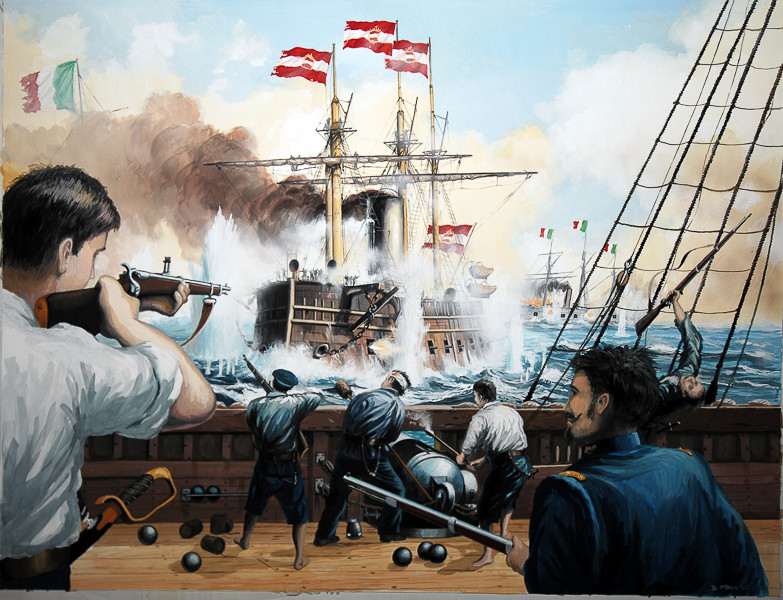
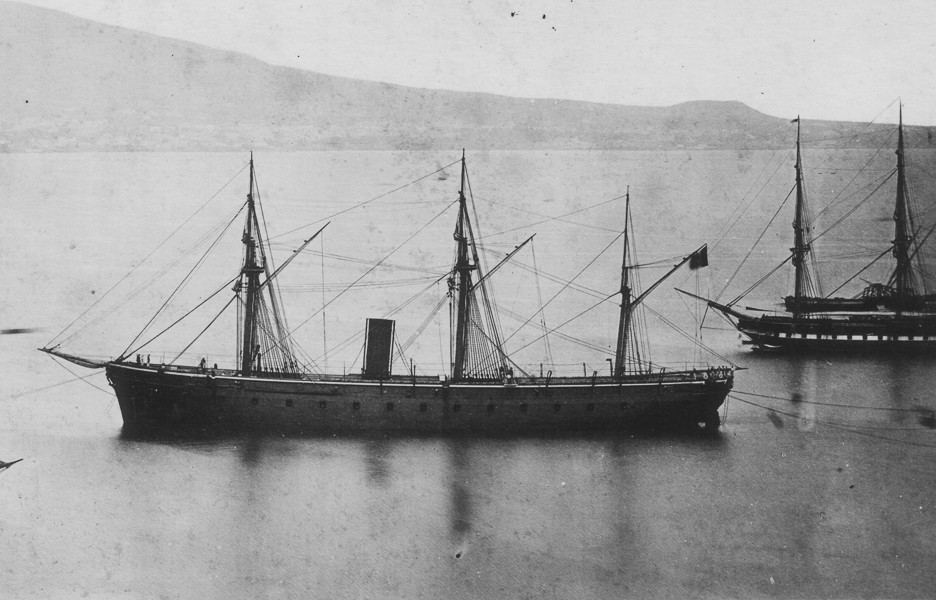
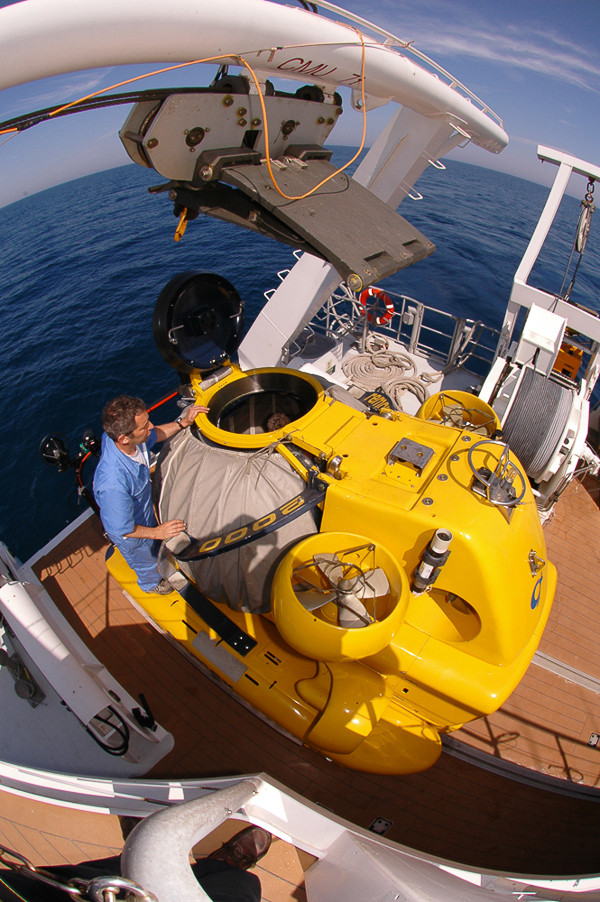
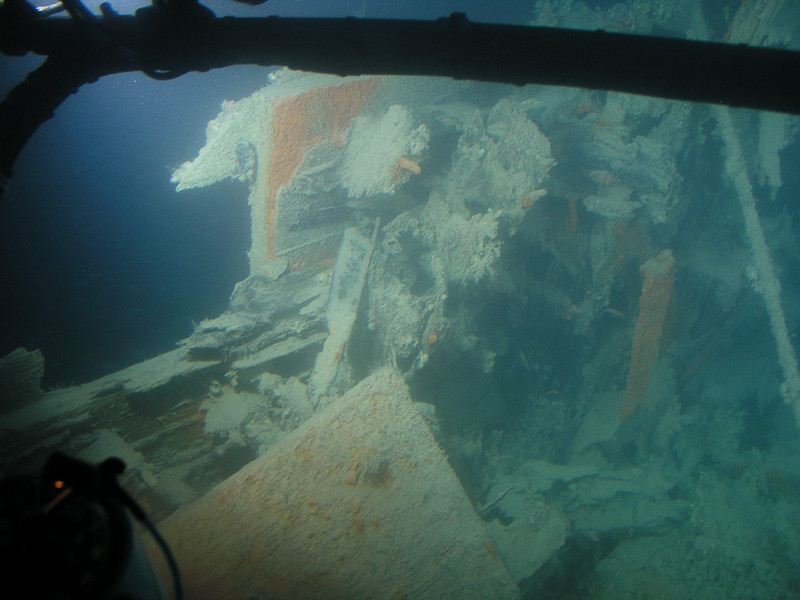
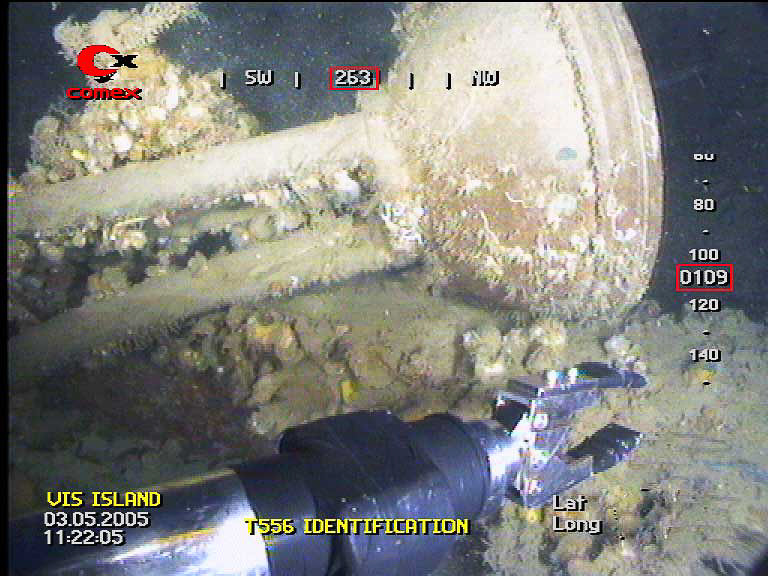
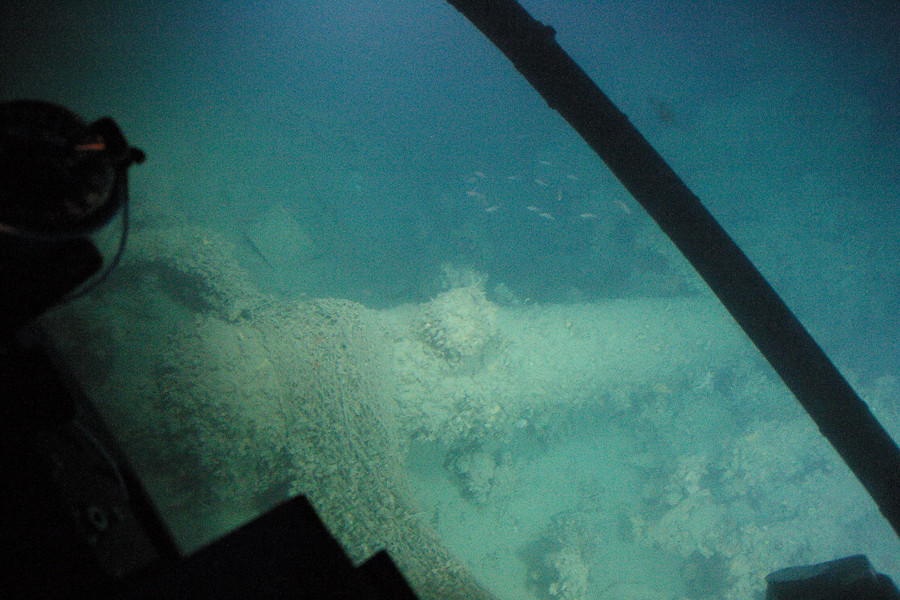

 The investment is co-financed by the Republic of Slovenia and the European Union from the European Regional Development Fund.
The investment is co-financed by the Republic of Slovenia and the European Union from the European Regional Development Fund.  H2O Globe BETA
H2O Globe BETA